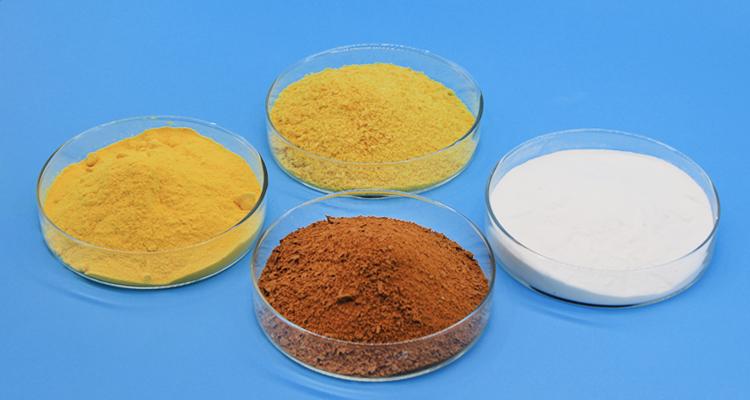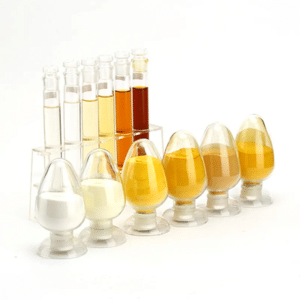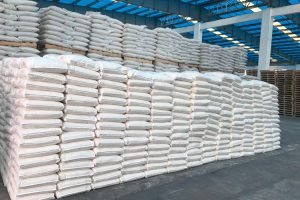
Contents
- 1
- 2
- 2.1 What Is PAC? Composition & Production
- 2.2 Physical Forms & Classifications of PAC
- 2.3 PAC Grades: Drinking Water vs. Industrial Grade
- 2.4 Applications of PAC in Water Treatment
- 2.5 Best Practices for Using PAC
- 2.6 Quick Reference: PAC Classification & Use
- 2.7 Final Thoughts
- 2.8 Frequently Asked Questions About Polyaluminum Chloride (PAC)
- 2.9 Water Treatment Simplified: How WaterCareChem Can Be Your One-Stop Shop
Polyaluminum Chloride (PAC): Composition, Types, Grades, and Applications in Water Treatment
Polyaluminum Chloride (PAC) is one of the most widely used coagulants in water treatment, known for its efficiency, versatility, and cost-effectiveness. This guide covers PAC composition, physical forms, classifications, grades, industry standards, and applications—everything water treatment professionals, procurement staff, or plant operators need to know before choosing the right PAC product.
What Is PAC? Composition & Production
Polyaluminum Chloride (PAC) is an inorganic polymer coagulant produced through the chemical reaction of:
-
Industrial hydrochloric acid
-
Calcium aluminate powder
-
Aluminum alum
The resulting PAC solution or powder is highly effective in coagulation, flocculation, and sedimentation, making it a go-to chemical in municipal, industrial, and wastewater treatment.
???? Read WHO Drinking Water Quality Guidelines for global standards on safe water treatment.

Physical Forms & Classifications of PAC
PAC is available in two physical forms, each manufactured with different processes and suited to different uses:
-
Granular PAC (Plate-and-Frame PAC): Produced by plate-and-frame pressing, resulting in coarse particles.
-
Powdered PAC (Spray PAC): Made by spray drying, producing a fine powder with faster dissolution.
Both forms come in three main colors—white, yellow, and yellow-brown. The form and color often indicate the grade (drinking water or industrial) and the purity level.
PAC Grades: Drinking Water vs. Industrial Grade
PAC is classified into two main grades based on purity, standards, and applications.
1. Drinking Water Grade PAC
-
Colors: White and light yellow, with white PAC offering the highest purity and fastest dissolution.
-
Form: Exclusively spray-dried powder for better solubility and consistency.
-
Standards: Must comply with GB/T 15892-2009, revised in 2020, which sets strict limits on impurities and improves safety for drinking water.
-
Applications: Safe for drinking water treatment, as well as in the pharmaceutical and food industries.
2. Industrial Grade PAC
-
Al₂O₃ Content:
-
30% & 28% (spray and plate-and-frame forms; spray type offers better clarity).
-
26%, 24%, 22%, 20% grouped under general industrial grade.
-
-
Standards: Regulated under GB/T 22627-2014 for industrial PAC.
-
Applications: Cooling water systems, industrial process water, and wastewater purification.
???? For technical background, see the US EPA Coagulation in Water Treatment Guide.
Applications of PAC in Water Treatment
PAC’s versatility allows it to serve multiple sectors:
-
Drinking Water Treatment: Removes turbidity, pathogens, and organic matter, ensuring compliance with national and WHO drinking water standards.
-
Industrial Water Purification: Treats cooling water and process water in manufacturing, reducing water costs and improving recycling.
-
Wastewater Treatment: Effectively treats high-pollution wastewater from industries like mining, textiles, leather, dyeing, meat processing, brewing, coal washing, and pharmaceuticals.
???? For research insights, see ScienceDirect: Performance of PAC in Water and Wastewater Treatment.
Best Practices for Using PAC
To get the best results and avoid common issues:
-
Select the Right Content: Match Al₂O₃ content to your water quality (higher for heavy industrial wastewater, high-purity for drinking water).
-
Control Dosage: Overdosing reduces efficiency and slows flocculation.
-
Run Pilot Tests: Always test PAC in small batches to determine the optimal dosage before large-scale application.
Quick Reference: PAC Classification & Use
| Category | Key Details |
|---|---|
| Composition | Hydrochloric acid, calcium aluminate, aluminum alum |
| Forms | Granular (plate-and-frame), Powdered (spray-dried) |
| Grades & Colors | Drinking Water: White/light yellow (spray only); Industrial: White/yellow/yellow-brown |
| Standards | Drinking Water: GB/T 15892-2009 (2020 revision); Industrial: GB/T 22627-2014 |
| Al₂O₃ Content | Industrial: 30%, 28%, 26%, 24%, 22%, 20% |
| Applications | Drinking water, industrial water, wastewater treatment |
Final Thoughts
Polyaluminum Chloride (PAC) is not a one-size-fits-all chemical. Understanding its composition, forms, grades, and standards ensures compliance, cost savings, and effective water treatment. Whether you’re managing municipal water, industrial processes, or wastewater discharge, choosing the right PAC grade is crucial to achieving safe, efficient, and sustainable results.
Frequently Asked Questions About Polyaluminum Chloride (PAC)
1. Is PAC safe for drinking water treatment?
Yes. Drinking water grade Polyaluminum Chloride (PAC) must meet the GB/T 15892-2009 standard (revised in 2020), which sets strict limits on impurities such as arsenic, lead, and cadmium. Always choose certified suppliers to ensure compliance and safety.
2. What’s the difference between PAC and traditional alum?
Compared with alum, PAC has a higher charge density, faster floc formation, and a wider pH application range. This means lower dosage requirements and better turbidity removal efficiency.
3. How should PAC be stored?
PAC should be stored in a cool, dry place away from moisture. Liquid PAC has a shorter shelf life (3–6 months), while solid PAC can last up to 12 months when properly sealed.
Water Treatment Simplified: How WaterCareChem Can Be Your One-Stop Shop
Water treatment shouldn’t be a headache. At WaterCareChem, we’re your trusted partner for all your water treatment chemical needs. We offer a comprehensive range of high-quality chemicals, from essential products to advanced solutions for specific applications.
Our team of water treatment specialists has the knowledge and experience to help you choose the right chemicals for your unique needs. We can answer your questions, provide technical support, and ensure you get the best possible results.
Don’t just settle for any water treatment chemical supplier. WaterCareChem is committed to providing exceptional customer service, competitive pricing, and reliable delivery so you can focus on what matters most – achieving optimal water quality.
- Extensive product range: Cater to a wide range of water treatment needs.
- Expert knowledge: Provide technical support and guidance.
- High-quality products: Ensure optimal water treatment results.
- Competitive pricing: Offer cost-effective solutions.
- Reliable delivery: Guarantee timely arrival of chemicals.
- Exceptional customer service: Prioritize customer satisfaction.
Contact WaterCareChem today to Request a Quote, and see how we can be a valuable partner for your water treatment chemical needs.
Last Updated on 2025-09-27 by system

